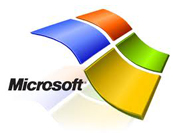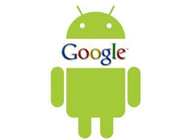|
Microsoft developing new way to login on tablets

Software giant, Microsoft is planning to develop a new way to log in to its tablet computers instead of tradition way of typing software.
e company is working on a mechanism in which it will allow users to log in using gestures on the screen.
read more... |
Soon, computers to tell your intensity of pain

The need for a better way to objectively measure the presence or absence of pain instead of relying on patient self-reporting has long been an elusive goal in medicine.
But now, using advances in neuroimaging techniques.
read more...
|
|
|
A $1 Billion ‘Model’ Employee Education Program

Big companies often seem to be conflicted — if not two-faced — when it comes to their workers. They pay lip service to their employees as their most cherished corporate assets, yet they routinely shed workers.
The payroll cutting is done in the pursuit of efficiency and profits, or because a company is jettisoning a business. That’s understandable, though harsh. These days, the obligation a corporation has to its workers, if any, is a matter of debate.
read more... |
|
|
Google To Launch Android-Based TV Software Shortly

Internet search giant Google has decided to launch Android-based television software this month.
Google said that its Android-based television software will permit the users to access TV via internet.
read more...
|
Office discipline: Right People, Wrong Attitude

We have the best in our teams. They are knowledgeable, skilled, experienced and well-trained on the job. However, despite all these facilitating factors, sometimes it is impossible to ignore the dwindling productivity on the whole. Having screened them for person-job fit and motivation.
read more...
|
| |
|
Detailed Articles |
|
Microsoft developing new way to login on tablets
Software giant, Microsoft is planning to develop a new way to log in to its tablet computers instead of tradition way of typing software.
he company is working on a mechanism in which it will allow users to log in using gestures on the screen. A user will be able to choose a photo and perform certain gestures in the right order of taps, lines, and circles in order to log in.

Some are raising questions on the safety of the system but as many users reply on simple predictable passwords, the gesture based system could prove to be more secure than passwords. The company admits that smudges on the screen or recording devices could allow others to determine the gestures but said that the risks are very low.
Analysts say that the system is not secure enough as the gestures on a screen of a tablet can be recorded from a distance by anyone. Company officials have said on the Building Windows 8 blog that there are some ways to break the security under the system but the presence of a vast number of password combinations could make the system more secure than the password system used in most devices.
The company has released a video showing Microsoft program manager Zach Pace logging in to a tablet with a family photo by various gestures on the picture. The demonstration also shows an option to switch to regular password login.
Article Source
|
|
|
Soon, computers to tell your intensity of pain
The need for a better way to objectively measure the presence or absence of pain instead of relying on patient self-reporting has long been an elusive goal in medicine.

But now, using advances in neuroimaging techniques, researchers including one of Indian-origin from the Stanford University School of Medicine trained a computer algorithm to interpret magnetic resonance imaging (MRI) data of the brain and determine whether someone is in pain.
People are more likely to trust a recommendation from a friend, so it is important to encourage your current email marketing list members to share your list. Share with your network buttons that are integrated into your email marketing messages help your list members easily share your content and newsletter with their social network contacts.
The idea was to train a linear support vector machine - a computer algorithm invented in 1995 - on one set of individuals, and then use that computer model to accurately classify pain in a completely new set of individuals.
The computer was then asked to consider the brain scans of eight new subjects and determine whether they had thermal pain.
"We asked the computer to come up with what it thinks pain looks like," said Neil Chatterjee, currently a MD/PhD student at Northwestern University.
"Then we could measure how well the computer did." And it did amazingly well. The computer was successful 81 percent of the time.
The study was recently published in the online journal PLoS ONE. (ANI)
Article Source
|
|
|
A $1 Billion ‘Model’ Employee Education Program
Big companies often seem to be conflicted — if not two-faced — when it comes to their workers. They pay lip service to their employees as their most cherished corporate assets, yet they routinely shed workers.

The payroll cutting is done in the pursuit of efficiency and profits, or because a company is jettisoning a business. That’s understandable, though harsh. These days, the obligation a corporation has to its workers, if any, is a matter of debate.
But back in December 1995, George David, then the chief executive of United Technologies, gave his answer. “As a private employer, we cannot guarantee anyone a job,” Mr. David said in a speech at the National Press Club in Washington. “But we are nonetheless obliged to provide employees reasonable opportunities to re-establish themselves, ideally on more favorable conditions, in the event of job loss.”
Granted, United Technologies is a big-tech company more than a bits-tech company. It makes products like jet engines, aerospace electronics, helicopters, air-conditioners and elevators. But all industrial products are increasingly animated and controlled by software. And the skills issues — and global competition — that United Technologies faces are common to any technology company.
Mr. David backed up his nice words with United Technologies’ dollars, and a commitment. The company, he said, would pay 100 percent of the cost of tuition and books for any employee seeking a college degree — associate’s, bachelor’s or graduate degree.
The offer came with no strings. An employee could choose any courses. And the worker could receive a degree one day, and go to work for another company the next.
In good times and recessions, United Technologies has kept the program intact. By now, more than 32,000 company employees have received college degrees in its “employee scholar program,” and more than 10,000 workers are currently enrolled. United Technologies has invested $1 billion in the program so far.
On Tuesday afternoon, the National Association of Independent Colleges and Universities gave its annual award for promoting higher education to United Technologies. This is the first time the association’s award has been given to a company.
David L. Warren, president of the independent colleges association, said the United Technologies program was the most generous it had seen. “We think it’s a model for the nation, one that hopefully other corporations might follow,” said Mr. Warren, the former president of Ohio Wesleyan University.
Nathan Boelkins, 33, a chief engineer at United Technologies’ Hamilton Sundstrand unit, has taken advantage of the employee scholar program, twice. He received a master’s degree in management, and is now studying toward a master’s in aeronautical science.
His course work has included some evening classes, but has been mainly online. The company gives employees three hours a week for study during their workdays, but, of course, most studying is done on evenings and weekends.
At Hamilton Sundstrand, Mr. Boelkins leads engineering teams that work on the electrical systems for Boeing 787 jumbo jets. His courses, he said, have improved his skills both in managing people and understanding sophisticated aerospace technology. “I feel like I have the right skills sets for anything that is thrown at me,” Mr. Boelkins said.
Not surprisingly, United Technologies has found alumni of the employee scholar program are both more likely to stay with the company than the work force in general and more apt to be promoted.
Measuring the benefit to United Technologies is tricky, but the program appears to have been a rewarding long-term investment, for the company as well as the workers. In 1995, when Mr. David announced the program, he noted that in the previous five years United Technologies had cut 33,000 jobs in the United States, about one job in three, while adding 15,000 jobs abroad.
In 1995, United Technologies had a global work force of 170,000, with 71,000 employees in the United States. In 2010, the most recent year figures are available, the company employed 208,000 worldwide, and 73,000 in America.
Article Source |
|
|
Google To Launch Android-Based TV Software Shortly
Internet search giant Google has decided to launch Android-based television software this month.
Google To Launch Android-Based TV Software ShortlyInternet search giant Google has decided to launch Android-based television software this month.
The new software is specifically made to open STBs, televisions and other devices to more content from the internet.

Moreover, the software is pulling interest from associates comprising Sony Corp., Intel Corp. and Logitech International SA, which are likely to introduce products, which back up the software.
But, none has so far discussed the efforts in public.
Presently, Google is planning on sharing some details regarding the technology with over 3,000 developers likely to be a part of its conference in San Francisco May 19 and 20.
Google showcases different technologies of interest to developers during its annual meeting.
The decision to address developers hints that the company may be desiring to begin a race to set up applications for its TV platform, much in the same way that Google, Apple Inc. and others have courted developers for smartphones.
The service, which uses the new Google software, lets users to access and search across programming from the internet plus Dish's conventional programming. (With Inputs from Agencies)
Article Source
|
|
|
Office discipline: Right People, Wrong Attitude
We have the best in our teams. They are knowledgeable, skilled, experienced and well-trained on the job. However, despite all these facilitating factors, sometimes it is impossible to ignore the dwindling productivity on the whole. Having screened them for person-job fit and motivation, some may find the cause rooted in something much more fundamental in any form of human behaviour: discipline.
Be it lack of punctuality, answering calls at meetings, chatting with friends over the phone during office hours or checking personal emails and Facebook every half hour, workplace discipline is an escalating problem for many managers. More and more managers complain about a young work force that has no sense of respect to the system, organization’s rules and unspoken guidelines based on common sense.

Discipline and self control are the ground rules of the game and a deficit of these creates a wrong attitude towards work. We probably all know that any form of expertise is futile without the right mind-set to channel it to the right place and right time. Workplace discipline is for improving performance, dealing with unhelpful attitudes and to correct damaging behaviour. It is also for turning performance around before termination or suspension of jobs. However, it has to be noted here; workplace discipline is not punishment.
Just so that we could put things in perspective: if we are team leaders or managers struggling to get our teams to optimally perform on a daily basis, we would probably know how important the following points are, in disciplining our direct reports.
Our approach should be to understand the cause of the behaviour. It is vital to give the employee the opportunity to explain why he/she is, for instance: always on the phone. If the excuse is based on unjustifiable reasons, then it is time to take charge.
It is important to be specific. We minimize defensive behaviour by making it clear to our employees what exactly we are disciplining about. Generic statements like ‘you need to improve your attitude’ can only add ambiguity. Relating the unruly behaviour to specific standards such as ‘you have been seen on the phone laughing and chatting away during office hours, and this is not acceptable’, is imperative.
Furthermore, putting the incident into context would add more clarity to our inquiry. This could be done by explaining to the employee how their behaviour disrupts the work flow and how it impacts on others’ quality and timely output. Furthermore, we could explain how this projects a bad image of the department or the team to the outsiders.
Specifying the change that we expect from the respective employees is essential: ‘I would like you to take your personal calls during the breaks and you have to limit using the office phone for such long calls’. In being specific about this expectation, we tell the employee that it is not a personal attack but something that we would ask anybody else to carry out too.
It is also necessary to explain the consequences of not adhering to the code of conduct. Since this is verbal warning, the employee should be informed of what other measures we would take if the behaviour is not to change; ‘if this continues, I have to request a disciplinary inquiry’. This ensures the repercussions of not changing and in turn makes him/her more responsible. If the employee does continue to display the wrong behaviour, we need to take action as mentioned. On top of being consistent in what we say and what we do, this will also act as a warning for others too.
Being consistent also applies when we have to discipline employees who may also be our friends. It is good to remember, that in the work environment our priority is to manage our teams. It will definitely not look good on us if we overlook behaviour in one person and not the other. Being impersonal and informing that it is the behaviour that is problematic and not him/her as a person, will help us to define our boundaries amongst friends at work.
Providing support and finishing on a positive note are crucial- ‘having said that, I want to avoid going down the disciplinary route; your team needs you and you play an important role’. The ending should promise a win-win situation to the employee and the company.
Finally, what if the problem is chronic and we realize our continuous attempt to rectify the difficult employee is similar to pouring water on a duck’s back? The harsh truth is that the company or team is better off without them. Problems vary in their severity and managers are called to make some hard decisions depending on the circumstances.
Discipline is as elementary as ABC. It forms the foundation of a person’s character.
Discipline subsequently suggests ‘respect’ for oneself and others, and it is not rocket science that without this respect, there will be no progress in any form of system: family, organization or wider society as a whole. (This columnist could be reached at rozaine@forte.lk).
Article Source
|
|
Itech Solutions |
|













